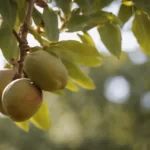Bok choy, a staple in Asian cuisine, is renowned for its crisp texture and mild, slightly sweet flavor. As a leafy green vegetable, it’s not only nutritious but also versatile in the kitchen. A common question among many who enjoy this vegetable is whether it can be frozen for later use. This article addresses that question by exploring the feasibility and methods of freezing bok choy, ensuring its freshness and flavor are retained.
Bok Choy
Bok choy, also known as pak choi, belongs to the cabbage family and is rich in vitamins A, C, and K, along with other minerals and antioxidants. It’s commonly used in soups, stir-fries, and steamed dishes. The vegetable comprises two main parts: the leafy greens and the white stalks, both of which offer different textures. The leaves are tender and cook quickly, while the stalks provide a satisfying crunch.
The Freezing Process
Freezing bok choy can be a great way to preserve its freshness, but it requires proper technique to maintain its quality. The process begins with blanching, which involves briefly boiling the vegetable and then plunging it into ice water. Blanching is crucial as it stops enzyme actions which can cause loss of flavor, color, and texture.
To freeze bok choy effectively, follow these steps:
- Clean and Chop: Wash the bok choy thoroughly to remove any dirt or grit. Then, chop it into desired sizes, keeping in mind that smaller pieces will freeze and thaw more evenly.
- Blanching: Bring a large pot of water to a boil. Add the bok choy and blanch for one to two minutes. For the leafy parts, a shorter time is sufficient, while the stalks may need the full two minutes.
- Cooling: Immediately transfer the blanched bok choy to a bowl of ice water. This stops the cooking process and helps retain the vibrant color.
- Draining and Drying: After cooling, drain the bok choy and lay it out on a clean kitchen towel to remove excess moisture. Excess water can lead to ice crystals and freezer burn.
- Freezing: Place the bok choy on a baking sheet lined with parchment paper, ensuring the pieces are not touching, and freeze until solid. Once frozen, transfer the pieces to airtight freezer bags or containers. This method prevents the bok choy from clumping together, allowing you to use only the amount you need later.
Tips for Freezing Bok Choy
To ensure the best results when freezing bok choy, consider the following tips:
- Pre-freeze in small batches: This helps maintain the quality of the vegetable and prevents it from sticking together in large clumps, making it easier to use only the amount you need for cooking.
- Use airtight containers or freezer bags: This protects the bok choy from freezer burn and preserves its flavor and texture. Squeeze out as much air as possible before sealing.
- Label and date the containers or bags: Keeping track of when you froze your bok choy helps you use it within its optimal freshness period.
Thawing and Using Frozen Bok Choy
When you’re ready to use your frozen bok choy, here’s how to thaw and prepare it:
- Thawing: It’s often not necessary to thaw bok choy before cooking, especially if you’re adding it to soups or stir-fries. However, if you need to thaw it, place the bok choy in the refrigerator for several hours or overnight. Avoid thawing at room temperature, as it can lead to loss of texture and flavor.
- Cooking: Remember that frozen bok choy may not require as much cooking time as fresh, since it softens during the blanching and freezing process. Add it towards the end of your cooking to prevent it from becoming overly mushy.
Shelf Life and Storage
Frozen bok choy can last in the freezer for about 6 to 12 months if stored correctly. The key to maximizing its shelf life is to ensure it’s properly sealed and kept at a consistent temperature. Regularly check your freezer’s temperature and avoid frequently opening and closing the freezer door, as fluctuations in temperature can affect the quality of frozen foods.
Alternatives to Freezing
While freezing is a practical way to preserve bok choy, there are other preservation methods you might consider:
- Refrigeration: Fresh bok choy can be stored in the refrigerator for a short period. Wrap it in a damp paper towel and place it in a vegetable drawer to maintain its freshness for about a week.
- Pickling: Bok choy can be pickled, creating a tangy and crisp condiment. Pickling involves immersing the bok choy in a vinegar-based solution with various seasonings.
- Drying: Dehydrating bok choy is another preservation method. The dried leaves and stalks can be rehydrated and used in soups and stews.
Each method has its advantages and affects the texture and flavor of bok choy in different ways. Freezing preserves more of the vegetable’s original texture and flavor compared to drying, while pickling offers a unique taste but alters the texture significantly.
Conclusion
Freezing bok choy is a viable option for preserving this versatile and nutritious vegetable. By following the proper blanching and freezing techniques, you can enjoy bok choy year-round, adding it to a variety of dishes with minimal preparation. Remember to store it correctly to maximize its shelf life and retain its quality. Whether you choose to freeze, refrigerate, pickle, or dry your bok choy, each method provides a way to enjoy this leafy green outside of its typical growing season, allowing you to diversify your cooking and reduce food waste.




